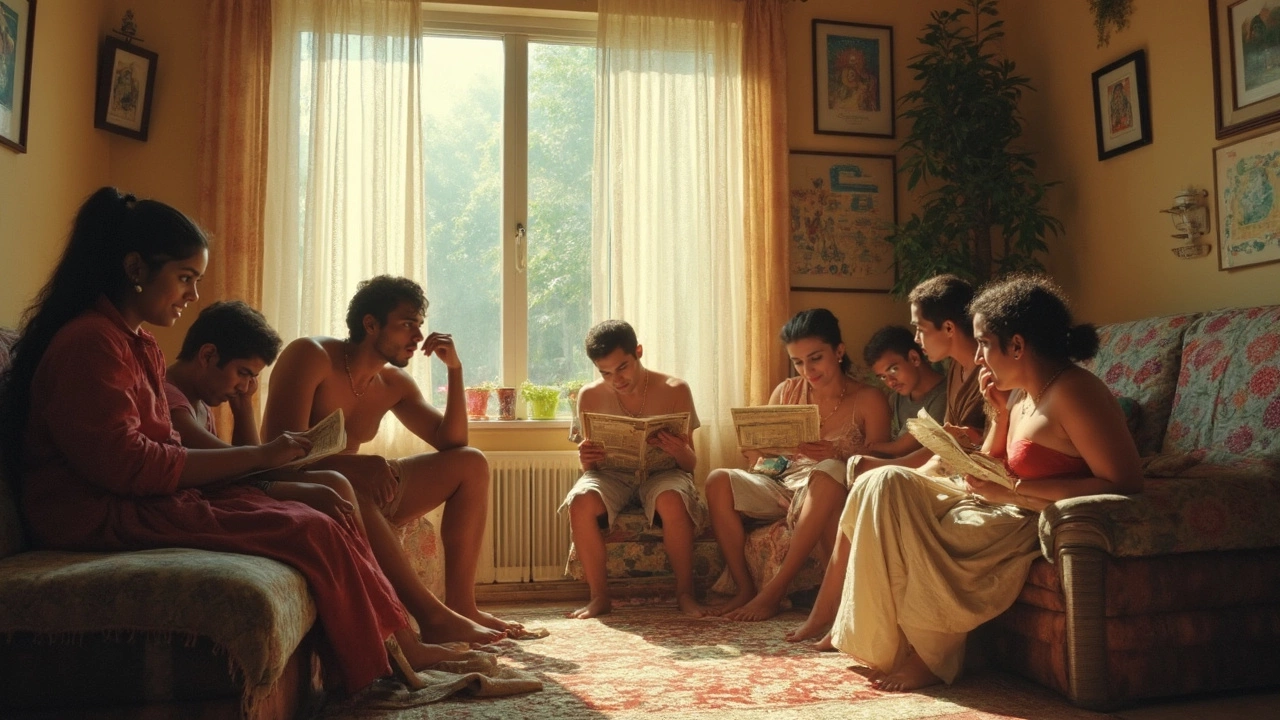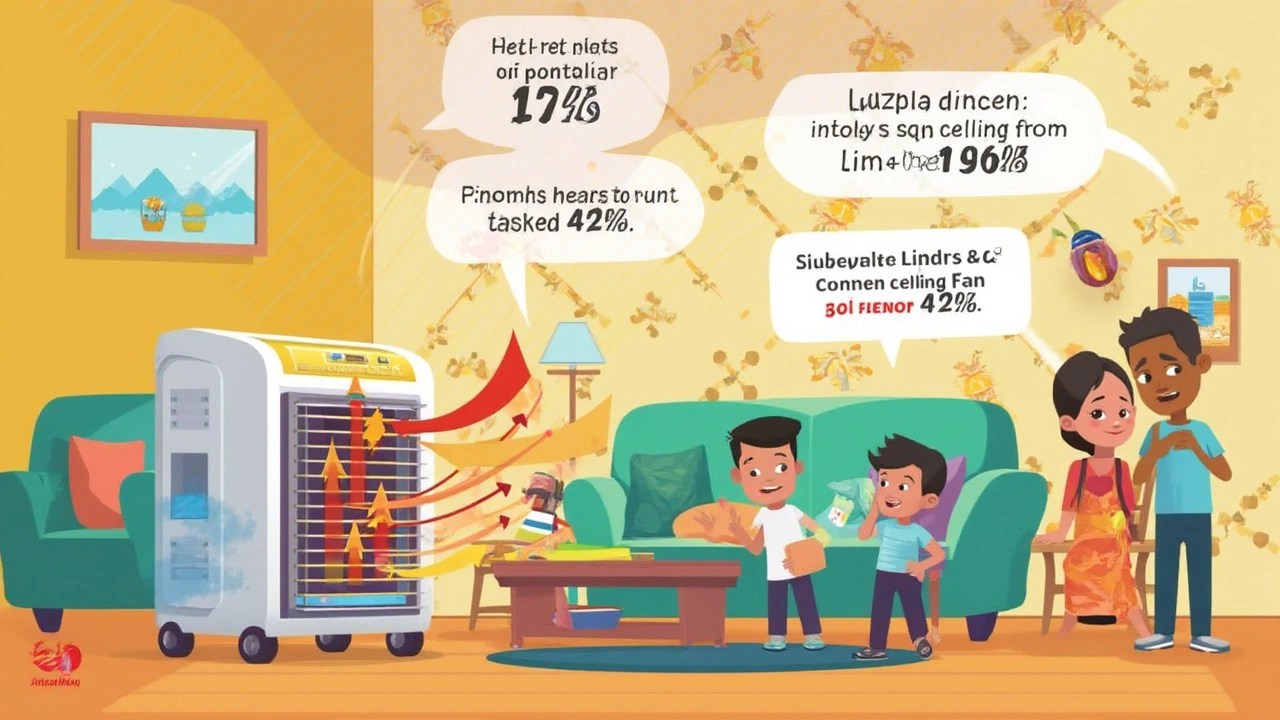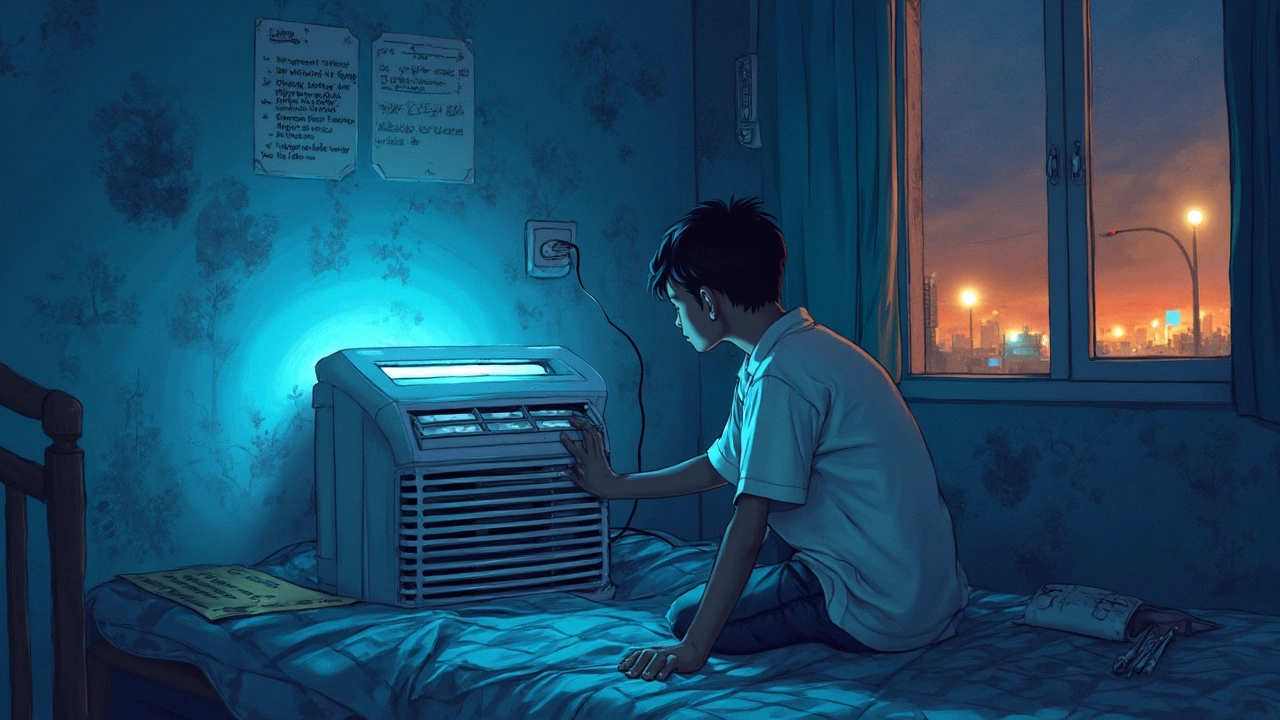
Ever noticed how your portable AC sounds like it's working overtime, but the room still feels sticky? You're not imagining things—these little units just don't measure up to their window and split-type cousins. The problem starts with their basic design. Portable air conditioners pull warm air from the room, run it over cold coils, and then blow the heat outside through an exhaust hose. Here’s the catch: a lot of the cool air they make is actually sucked right back out of your space along with the hot air. That’s why the room often barely budges below sweaty.
If you’ve put one in a room with a single window, doors open, or not-so-tight seals around the hose, it’s even worse. Hot outdoor air sneaks back in, forcing the AC to work even harder. This ongoing battle wastes a ton of energy and frustrates homeowners who hoped for a cheap fix to summer misery. No surprise, most portable ACs are also pretty loud, partly because all the heat, moisture, and noise stay inside the room.
- How Portable ACs Work (and Where They Fall Short)
- Common Efficiency Killers in Real Rooms
- The Truth About Energy Use and Cooling Power
- Smart Placement and Setup Tips
- Better Alternatives for Beating the Heat
How Portable ACs Work (and Where They Fall Short)
Let’s get into the nuts and bolts. A portable air conditioner sucks in warm air from your room, runs it through a coil packed with refrigerant that chills the air, and then blows the cooled air back into the space. The leftover hot air? That gets pushed outside through a hose—usually connected to your window. On paper, it sounds solid. But the details trip things up.
First problem? The unit often sits inside the very room it’s trying to cool. All the mechanical parts throw out heat as they run. Unlike window ACs, which keep all the hot bits outside, a portable AC stores everything, including the compressor, inside with you. So you’re fighting your own device for temperature control.
Most units use just one hose. While this seems simple, it’s a big design flaw. Every blast of hot air shot outside through that hose has to be replaced with new air, and that usually means more hot, humid air sneaks in from other parts of your home or even outside. That “one-hose problem” means the harder your portable AC works, the more outside air it sucks in—and you never fully win the cooling battle.
Another thing to know: portable ACs need a tight seal at the window opening where the hose connects. Those who stick a towel around the cracks or don’t bother fixing leaks end up with an endless cycle—cooled air escapes, hot air seeps back in. The cooling never catches up.
And about size? Even if a device says it’s rated for 400 square feet, real-life tests show many units only keep small bedrooms comfy. Nearly every expert review finds that *portable air conditioner* models usually deliver less cooling power (measured in BTUs) than advertised once you factor in leaks and real-world room layouts.
So, it’s a patchwork system—it cools the air, but also heats the room, and it rarely seals out the heat completely. That’s why these things are more of a quick fix than a long-haul solution for steamy rooms.
Common Efficiency Killers in Real Rooms
If you’re wondering why your portable air conditioner feels more like a fan with an attitude than an actual AC, the way it’s set up in your room is usually to blame. Real people use these units in all sorts of spaces, not in those perfect test labs. Turns out, houses and apartments are full of things that mess with portable ACs’ cooling power.
- Leaky Windows and Doors: Portable ACs are only as good as the room’s insulation. If windows and doors aren’t sealed tight, hot air keeps sneaking in, and cool air escapes. Those gaps make the AC run non-stop.
- Bad Hose Placement: The exhaust hose is supposed to shoot hot air outdoors. But if the hose is too long, too kinked, or leaks, some of that hot air blows right back in. Every bend cuts down on efficiency.
- Wrong Room Size: People often use portable ACs in rooms that are just too big. If the unit is underpowered for your actual space, you’ll notice almost no difference, and the AC will sound like it’s about to lift off.
- Sun-Baked Rooms: If your AC is stuck in a sunny room, you’re fighting against Mother Nature. South-facing rooms and those with lots of glass heat up fast, making the unit struggle to keep up.
- Poor Air Circulation: Shoving the AC in a corner means cool air can’t reach the rest of the room. The unit keeps cooling the same tiny spot while the rest stays muggy.
If you want to see just how badly these quirks pile up, check out some real numbers:
| Factor | Potential Efficiency Loss |
|---|---|
| Leaky windows/doors | Up to 30% |
| Long or kinked exhaust hose | 10-20% |
| Room too large for AC's BTU rating | AC cools only 60-70% of room |
| Direct sunlight exposure | Extra 10°F in room temperature |
Blocking drafts, shortening the exhaust hose, and using blackout curtains in sun-facing rooms can give your portable AC a fighting chance, but you’ll never get the same chill you would from a window or split-type system.

The Truth About Energy Use and Cooling Power
Portable air conditioners sound convenient, but cooling your space comes at a price. The honest truth? These units use a lot of energy for the amount of comfort they actually deliver. Most models on the market today offer a cooling capacity between 8,000 and 14,000 BTUs, but what's printed on the box doesn’t tell the whole story. That rating is based on test conditions, not your real, lived-in home.
Things get even trickier thanks to something called the "dual hose vs. single hose" debate. Most affordable portable ACs use just one hose. Single-hose models suck in warm air from your room and blow it outside, but that process creates negative pressure. The result? Hot air from other parts of your home (or outdoors) sneaks right back in, making the unit work even harder. Dual-hose units help some, but they're usually pricier and still not as effective as window or split-type ACs.
Another eye-opener? Energy Efficiency Ratio (EER). Portable air conditioners usually have EERs of about 8–10, compared to the 11–15 range for window units. That means you’re paying more for the same—or worse—cooling. If you’ve noticed your power bill spiking in summer, your portable AC might be the culprit.
| Type of AC | Average EER | Typical Power Use (Watts) | Cooling Capacity (BTU) |
|---|---|---|---|
| Portable AC | 8 – 10 | 900 – 1500 | 8,000 – 14,000 |
| Window AC | 11 – 15 | 500 – 1500 | 8,000 – 18,000 |
| Split-System AC | 13 – 20+ | 700 – 1800 | 9,000 – 24,000+ |
Here are some ways you can squeeze more cooling from a portable AC if you’re stuck with one:
- Make sure the exhaust hose is as short and straight as possible, so less heat leaks back in.
- Seal up the window gap around the hose—use window kits or weather stripping to stop hot air from sneaking in.
- Give the unit a break when you leave the room. Running nonstop wastes power fast.
- Keep blinds or curtains drawn during the day to block out heat from the sun.
When it comes to getting the most out of your portable air conditioner, it pays to know what you’re working with. It's not just about plugging it in and hoping for the best—you’ve got to work with its limits to stay cool without draining your wallet.
Smart Placement and Setup Tips
Setting up your portable air conditioner the right way can make a difference between a barely noticeable cool breeze and actually feeling comfortable. First off, always place your portable AC as close as possible to the window you're using for venting. The shorter the exhaust hose, the less hot air leaks back in and the less energy your unit wastes fighting itself.
Next, make those window kits work the best they can. Gaps around the hose or window panel let hot air sneak back into your space, so seal them fully. Lots of users grab foam strips or even towels to plug cracks in a pinch. If you can feel hot air coming in around the window kit, your AC is wasting energy and your comfort suffers.
Another big one: keep doors closed. Every open door is an invitation for heat and humidity to mess up your cooling. Try to use your portable AC in the smallest closed-off space possible. If that's not possible, use door draft blockers to slow down air mixing between rooms.
Don’t forget maintenance. Clean the filters weekly—a clogged filter means less airflow and way less cooling. Also, empty the water reservoir as soon as it fills up. Some models shut off automatically when full, but even before that they lose power as humidity rises inside.
- Always keep at least 15–18 inches of space around the AC intake and exhaust for better airflow.
- If your unit struggles on hot, sunny days, try to pull room-darkening curtains to keep out direct sunlight.
- Set the temperature a few degrees lower before peak afternoon heat hits; portable ACs are slow to catch up if you wait until it’s already hot.
The stats back this up. In a 2024 Consumer Reports test, properly installed portable ACs cooled rooms on average 2.5°F lower than same units with sloppy window kits or long hoses. That’s enough to be the difference between sticky and satisfied.
| Setup Mistake | Cooling Efficiency Loss (%) |
|---|---|
| Poor window kit seal | Up to 25% |
| Exhaust hose longer than 6ft | 10–15% |
| Dirty air filter | 15–30% |
Small changes in setup really do add up. You probably won’t turn your room into an icebox, but these tips can help you squeeze out every bit of cooling your portable AC has to offer.

Better Alternatives for Beating the Heat
If your portable air conditioner isn't cutting it, you do have other options that cool better, save on energy, and actually keep a room comfortable for more than ten minutes at a time.
First up: window air conditioners. They’re the go-to pick for a reason. Unlike portable models, window units dump almost all of the hot air outside, not back into the room. That means real temperature drops. On top of that, most modern window units use way less electricity per BTU (that’s the fancy label for cooling power). Residential models usually cost $200 to $500, while installation is something handy folks can manage themselves in an hour.
If you want a step up from window units, consider mini-split systems. These can cool a whole house or just one room with unbeatable efficiency. You get a slim indoor unit and a small outdoor compressor—no giant hoses snaking around. They cost more up front (think $1,200 and up, including installation), but energy bills will make you smile in the long run. They’re also nearly silent inside, which is a sweet bonus if you hate loud fans.
Sometimes, you just want to spend less. In mild climates, simple stuff like box fans in windows or what's called a "whole house fan" can pull in cooler night air to take the edge off by morning. And if you rent and can’t change much, blackout curtains and sealing cracks will stop sunlight and hot air from ruining your efforts.
Check out this quick comparison of common cooling options:
| Type | Average Cost | Typical Energy Use (Watts) | Noise Level |
|---|---|---|---|
| Portable AC | $300–$600 | 900–2,000 | High |
| Window AC | $200–$500 | 500–1,500 | Medium |
| Mini-Split | $1,200–$3,000 | 300–1,000 | Low |
| Box Fan | $20–$50 | 40–100 | Low |
If you own your home and can swing it, mini-splits are hard to beat for long-term comfort and savings. For renters on a budget, upgrading to a solid window unit or just doubling down on fans and good blinds can make summer far less sweaty. Every situation’s a little different—pick what works with your budget, your space, and your noise tolerance.